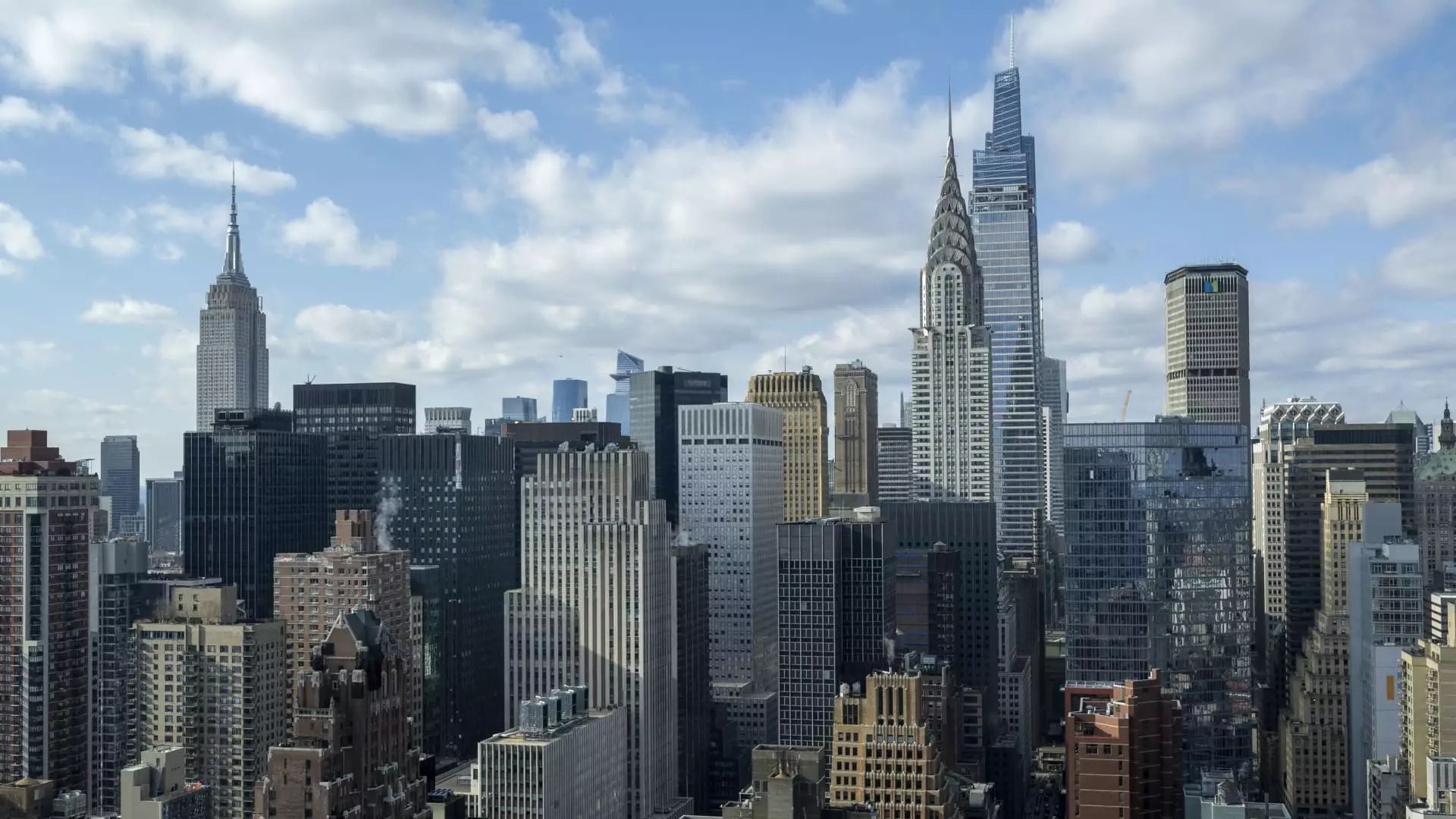After grappling with an unprecedented downturn triggered by the pandemic, New York City’s office space demand has made a remarkable recovery, reverting to levels akin to those seen before health crises reshaped our professional landscape. Recent data from VTS indicates that the fourth quarter witnessed a surge of 25% in office demand year-on-year, attributed largely to an influx of fresh workers and a determined push by employers to coax existing employees back into traditional office environments. This shift, underscoring the intricate interplay of economic and cultural forces unique to New York, hints at a broader reinvigoration of urban workspaces.
The recovery narrative revolves around a burgeoning optimism among businesses that signifies a renewed faith in the value of in-person collaboration. According to Nick Romito, CEO of VTS, the interplay between economic stimulus and cultural dynamics holds particular weight in sectors like finance and technology, sectors that have traditionally anchored the New York economy.
The real estate sector, particularly companies like SL Green Realty Corp., is experiencing both the challenges and opportunities this recovery presents. Despite SL Green’s recent underperformance in revenue relative to analyst expectations, the company communicated a tightening office market as leasing demand continues to accelerate. Such circumstances indicate not only resilience but a recalibration of market dynamics amidst the shifting workforce patterns.
SL Green’s CEO, Marc Holliday, highlighted the anticipated creation of approximately 38,000 new office-related jobs in New York City by 2025—primarily in finance, business services, and IT. This projection serves as a harbinger of substantial demand for office space, suggesting that soon, large-scale absorption of square footage will be needed to accommodate the influx of employees returning to in-person roles. Moreover, the notion that these jobs will not be predominantly remote reflects a significant shift in corporate strategies toward workplace engagement.
The commitment of major corporations, such as IBM, to expand their office footprint in New York City reinforces confidence in the return to traditional work environments. IBM’s recent signing of an expansion lease for over 92,000 square feet at One Madison Avenue brings their total occupancy to more than 362,000 square feet. Such moves underscore an enduring dedication to fostering collaborative workspaces, pivotal for innovation and connectivity in a post-pandemic world.
IBM’s facilities are designed to showcase a vibrant environment that nurtures interaction among employees and partners globally. This alignment with contemporary workplace needs affirms the company’s belief in the importance of physical spaces for idea exchange and collective problem-solving, a sentiment echoed across the corporate spectrum in New York.
While New York emerges as a clear frontrunner in recovery, other urban centers are not lagging significantly. Notably, San Francisco recorded an impressive 32% growth rate in office demand, though it began its recovery from a relatively lower baseline. In addition, cities like Seattle and Chicago are witnessing approximately 15% annual growth in demand, indicative of a broader trend where employers are embodying hybrid work models that necessitate regular in-office presence.
Ryan Masiello, CSP of VTS, articulated that while markets like New York are quickly returning to pre-pandemic office usage, the overall national landscape indicates slow yet steady improvement. The fourth quarter of the previous year saw national demand climbing by 12% against the last quarter, a surprising uptick juxtaposed against the customary seasonal decline.
The emergence of this growth in office demand—against a backdrop of a cooling labor market—illustrates a pivotal shift in business strategies. Companies seem increasingly willing to make substantial investments in office space, a striking contrast to the uncertainty that dominated the last few years. This trend signals not only recovery but a transformation in workplace dynamics, as businesses begin to rethink long-term plans and organizational structures in the face of changing workforce expectations.
As we contemplate the future of office spaces, it’s evident that the intricate blend of cultural, economic, and technological factors will continue to influence the real estate market, driving demand and redefining the concept of work in one of the most iconic cities on the globe. The revival is not simply a return to the pre-pandemic status quo but rather a reimagining of office spaces that are equipped to foster collaboration, creativity, and community among today’s diverse workforce.


Leave a Reply